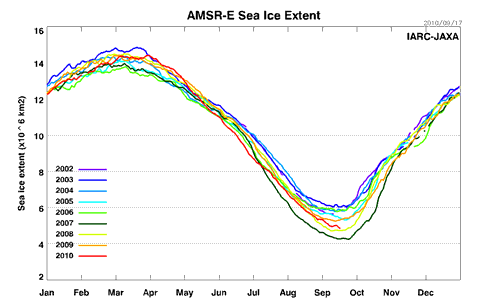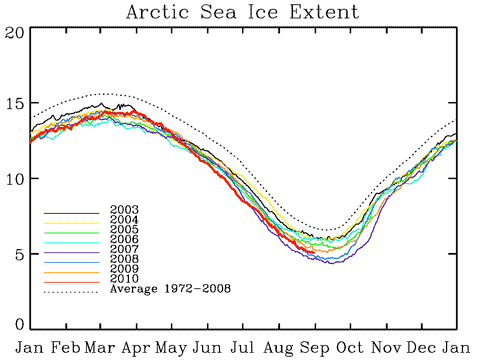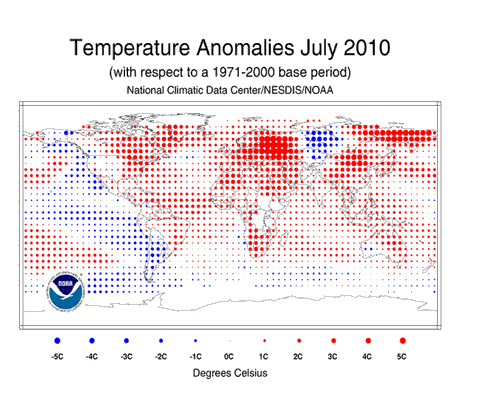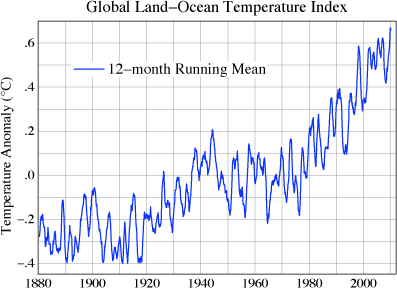Earlier this week, the National Snow and Ice Data Center (NSIDC) announced that the Arctic sea ice had reached its summer minimum extent, based on a four day run of extent increases. And then, like the fat lady in an overwrought opera refusing to die, trilling her agony and ecstasy to an appreciative audience, ice extent started dropping again. It was, as I suggested it might be at Neven’s Arctic Sea Ice blog, a double dip minimum — and as of this morning the extent (IJIS-JAXA graph above, but the NSIDC’s shows the same thing) is still dropping down towards 2008 — which holds second place in the record behind 2007. I still think it’s unlikely that the 2010 melt will do enough to pass 2008, but there’s a lot of thin ice and warm water up there, as I noted last Monday, and it will be interesting to see how the PIOMAS numbers for ice volume turn out — a new record low is definitely on the cards.
Attention will now turn to the autumn freeze-up, and the potential for the heat released by ice formation to impact northern hemisphere weather patterns. I’ve been reading a few papers on that subject, and will post a discussion as autumn up North progresses.
On a different tack, the future of the Arctic is becoming a popular subject for books. Robin McKie reviewed a selection for the Observer earlier this year (and from that selection I plan to read Charles Emmerson’s Future History of the Arctic, mainly because it seems to have arrived in southern hemisphere bookshops recently), but the book getting the most attention at the moment is Laurence C Smith’s The World in 2050: Four Forces Shaping Civilization’s Northern Future, due out this week (Science Daily). Smith summarises his vision in an article for the Wall Street Journal:
I imagine the high Arctic, in particular, will be rather like Nevada—a landscape nearly empty but with fast-growing towns. Its prime socioeconomic role in the 21st century will not be homestead haven but economic engine, shoveling gas, oil, minerals and fish into the gaping global maw.
That assumes, of course, that the “gaping maw” still exists…


 With the northern hemisphere summer fading into autumn, time for a quick overview of Arctic events. The sea ice is nearing its annual low point, and appears to be heading for a minimum somewhere between 2009 and 2008 — 2007’s record minimum appears to be beyond reach. The
With the northern hemisphere summer fading into autumn, time for a quick overview of Arctic events. The sea ice is nearing its annual low point, and appears to be heading for a minimum somewhere between 2009 and 2008 — 2007’s record minimum appears to be beyond reach. The 


